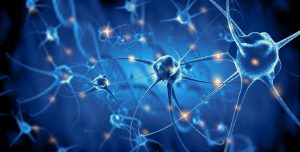Role of Golgi Apparatus & Endoplasmic Reticulum in Protein Synthesis

Golgi apparatus (3-D illustration)
Table of Contents
Continued from the previous tutorial that introduces protein synthesis…
mRNA and tRNA
mRNA leaves the nucleus and enters the cytoplasm where ribosomes can be found, the site of protein synthesis.
The mRNA strand is met in the ribosome by complementary tRNA anticodons, which have opposing bases to that of the mRNA strand (the codons).
For example,
if the mRNA sequence is A-A-U-C-A-U, (codon)
then the tRNA sequence is U-U-A-G-U-A (anticodon)
Each tRNA molecule consists of 3 bases, deemed an anticodon that complements the opposing bases on the mRNA strand. These, in turn, have the amino acid sequence to successfully code for a particular amino acid.
Each amino acid has a certain sequence of bases to make it unique. Therefore, as a summary:
- The initial DNA contained a certain sequence of nucleotides
- The mRNA has a pre-determined sequence (because it is transcribed from the DNA)
- Again, as a consequence, the anticodons possess a pre-determined sequence due to the mRNA
- As each amino acid corresponds to a particular anticodon, a unique amino acid sequence is created forming a protein
These amino acids (peptides) can combine to form a polypeptide chain (proteins), which are used in a variety of structures such as enzymes and hormones (explained in the protein variety tutorial)
Ribosomes and Rough Endoplasmic Reticulum (RER)
Ribosomes are the site of protein synthesis and can occur freely in the cytoplasm though more commonly on the outer surface of the rough endoplasmic reticulum. The endoplasmic reticulum presents a large surface area on which these ribosomes can be situated, therefore allowing protein synthesis to occur on a large scale.
The rough endoplasmic reticulum is particularly abundant in growing cells which demand a high turnover of materials in its growth. Rough ER is responsible for transporting the newly synthesized proteins to the Golgi apparatus.
The Golgi Apparatus
The Golgi apparatus is composed of flattened fluid-filled sacs that control the flow of molecules in a cell. This is also the case of protein. Carbohydrates are added to the protein to complete its production.
This finished product, glycoprotein, is ‘pinched off’ the Golgi apparatus, and is transported by a vesicle of the cell membrane. When this vesicle reaches the cell membrane, it binds to a receptor on the surface and excretes the protein, where it can then undergo its function.
These newly formed glycoproteins (proteins with added carbohydrates) are used in a variety of ways, and in light of this, there is a wide variety of proteins in relation to their function. This is investigated in the next tutorial …
You will also like...

Non-Mendelian Inheritance
In this tutorial, find out more about certain types of inheritance that does not follow the Mendelian inheritance patter..

Running Water Freshwater Community Factors
This tutorial noted some of the physical and chemical factors that provide the framework of a running water community in..

Community Patterns
Learn about community patterns and the ecological factors influencing these patterns. Revisit some of the ecosystems you..

Growth and Plant Hormones
Plants, like animals, produce hormones to regulate plant activities, including growth. They need these hormones to respo..

Neural Control Mechanisms
Neurons generate electric signals that they pass along to the other neurons or target tissues. In this tutorial, you wil..

Genetic Engineering Advantages & Disadvantages
This tutorial presents the benefits and the possible adverse eventualities of genetic engineering. Know more about this ..
